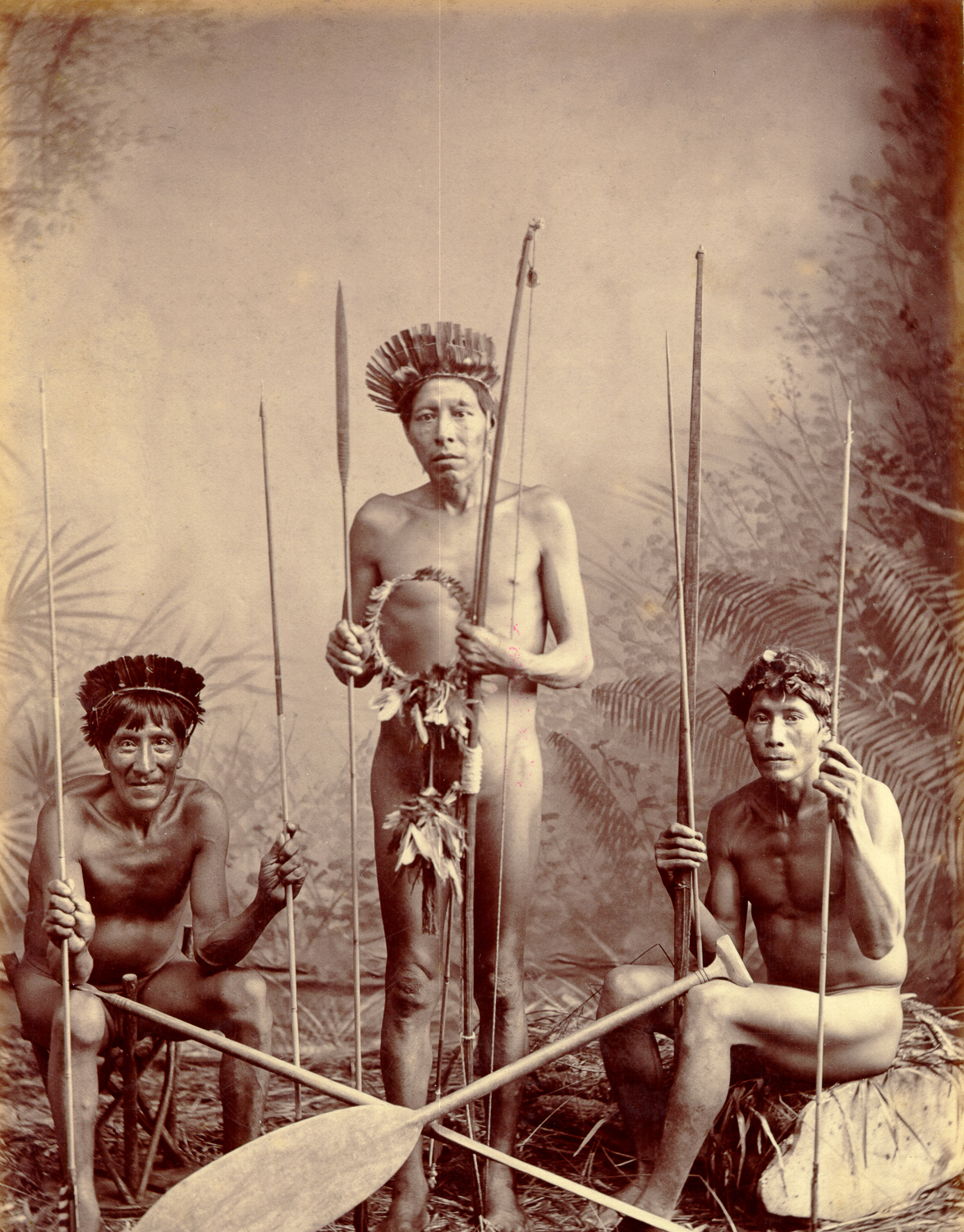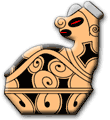It is an urgent imperative to dispel the myths and misinformation about
the indigenous inhabitants of the Caribbean. These noble peoples warrant
much greater recognition for their tremendous contributions to world civilization.
They form part of the FIRST NATIONS of the so-called Americas.
Existing data bases however still do not adequately provide information
on the earliest settlers, the SIBONEY
peoples ( STONE AGE: 800 -1200 B.C.E. ). Some anthropologists theorize
that they may have migrated from the South Pacific via the South American
mainland. Descendants of the SIBONEY are who the early Europeans settlers
referred to as CARIBS & ARAWAKS. These are misnomers and clarification
is necessary.
The TAINO peoples migrated from the YUCATAN, Central America to the Greater
Antilliean islands of Cuba, Haiti, Puerto Rico and Jamaica. The main group
of these indigenous peoples refer to themselves as "Jatibonicu"
(Great People of The Sacred High
Waters) and currently
reside

on the island
of Puerto Rico.
LOCONO is the accurate reference for the estimated
five hundred South American tribes that form the linguistic grouping wrongfully
called ARAWAK.
This name is as a result of the FAMOUS MISTAKE of the European arrivants
who thought they had arrived in South Asia -aka EAST Indies. They foolishly
identified the Locono
as SARAWAK though
they were the indigenous peoples of the region known today as the Caribbean.
To this day, LOCONO are agriculturists, famed for their hybridization technology.
Our palates owe the likes of the Avocado, Papaya (Paw-Paw), String Beans,
Cassava, Tobacco and Sweet Potatoes to these industrious people. Cotton
cultivation was also subject to Taino / Locono hybridization techniques
resulting in the production of a variety of strains; red, brown, white,
and yellow. Their pride in art is evidenced through carved stone monuments
and pottery.
The GALLABI are
erroneously called the CARIBS.
This word is coined from the Spanish word for Man-Eater > Cannibal - CANIBALE.
They belong to the linguistic group which includes some three hundred tribes
of the Amazon basin. They migrated over a period of a century from South
American mainland to the lesser Antillean islands where they settled. They
eventually encountered the Taino in Puerto Rico during their migration
across the region. All this occured place prior to the arrival of the Europeans.
The GALLABI / INERI or
Island Charibs
as they became to be known hunted, rather than cultivated their food. It
was actually believed by some that their temperament was unsuited to agriculture.
Thus being nomadic, had little time to produce other than utilitarian tools
and crude work.
Unlike the Locono
with whom they intermarried, the Gallabi ate the flesh of wild meat and
conducted fishing expeditions in their well constructed canoes ( PIROGUES
). For both nations are well known for their extensive sea faring expeditions
across long distances in the region.
The idea that GALLABI were 'man eaters' stem from the bias observation
of their ritual deification of deceased peers and ancestors. The European
arrivants discovered Gallabi's homestead constituted a section where human
remains were displayed. This social behaviour is not unlike many other
people across the world. Anthropologists do agree that early Europeans
conducted similar rituals and that the deification of Christian Saints
was forged from such behaviour.
Taino, Locono
and Gallabi cultures constitute the bulk of
prehistoric patrimony of the region. The SHAMANISTIC religious concept
of these peoples is a distinguishing characteristic. They revered the local
wildlife ( example--frogs, turtles, deer, dogs, manattee, alligators, cayman,
humming birds) in addition to the spiritual force of nature that inhabits
rocks, places rivers, trees, caves and mountains.
Art is an expression of their religious belief. Ancestors and great leaders
are still worshipped as the concept of reincarnation is a major tenet of
their belief system. Cohoba, a narcotic snuff is still used in initiation
and other ceremonies. While the ZEMI is understood to be a sacred symbol
to the Giver of Cassava- Jocahu, Shaped as a triangle- the points represent
various points of reference for these peoples.(Life/ Death and the Creator)
Surviving indigenous peoples are renown for their unique architectual designs.
The AJUPA, TAPIA and UMANA-YANA are well known, still gracing the rural
districts of Venezuela, Trinidad, StVincent, Dominica and Guyana. Handicraft
produced from various grasses, fibres and vines, abound in the region,
owing to the inception to the creativity of these peoples.Gourds/ calabashes
and clay pottery are still used as household implements to date. The Spirit
that bounded these mysterious peoples to these uncaring islands for so
many centuries is surely still alive. Their decimation has left a residue
of their souls in certain places that have always been considered sacred.
According to recent
statistics of the region, Indigenous (Gallabi / Locono) peoples survive
in GUYANA (ca 40,000 )Trinidad/Dominica (ca 5,000 ) Belize (ca 25,000 )
and St Vincent (ca 6,000 ). This does not include the KARIFUNA ( in Belize,
St. Vincent, Hondoras, and Nicaragua ) who are an assimilation of Afrikan
descendants and the Gallabi; nor the BUSH BLACKS another group decended
from runaway Afrikan slaves and the Locono in French Guiana and Surinam.
Today their main concerns can be described as enforced culturalisation,
miscegenation, patronalism, discrimination, social magininalization, plus
systematic denial of their civic and land rights.

Selected
Excerpt from:
"ABOUT
THE CARIBBEAN "
edited
by
Dr.
Roi Ankhkara Gunapo Kwabena
Published by
Afroets
Press International Publishers
Six Editions (Revised)